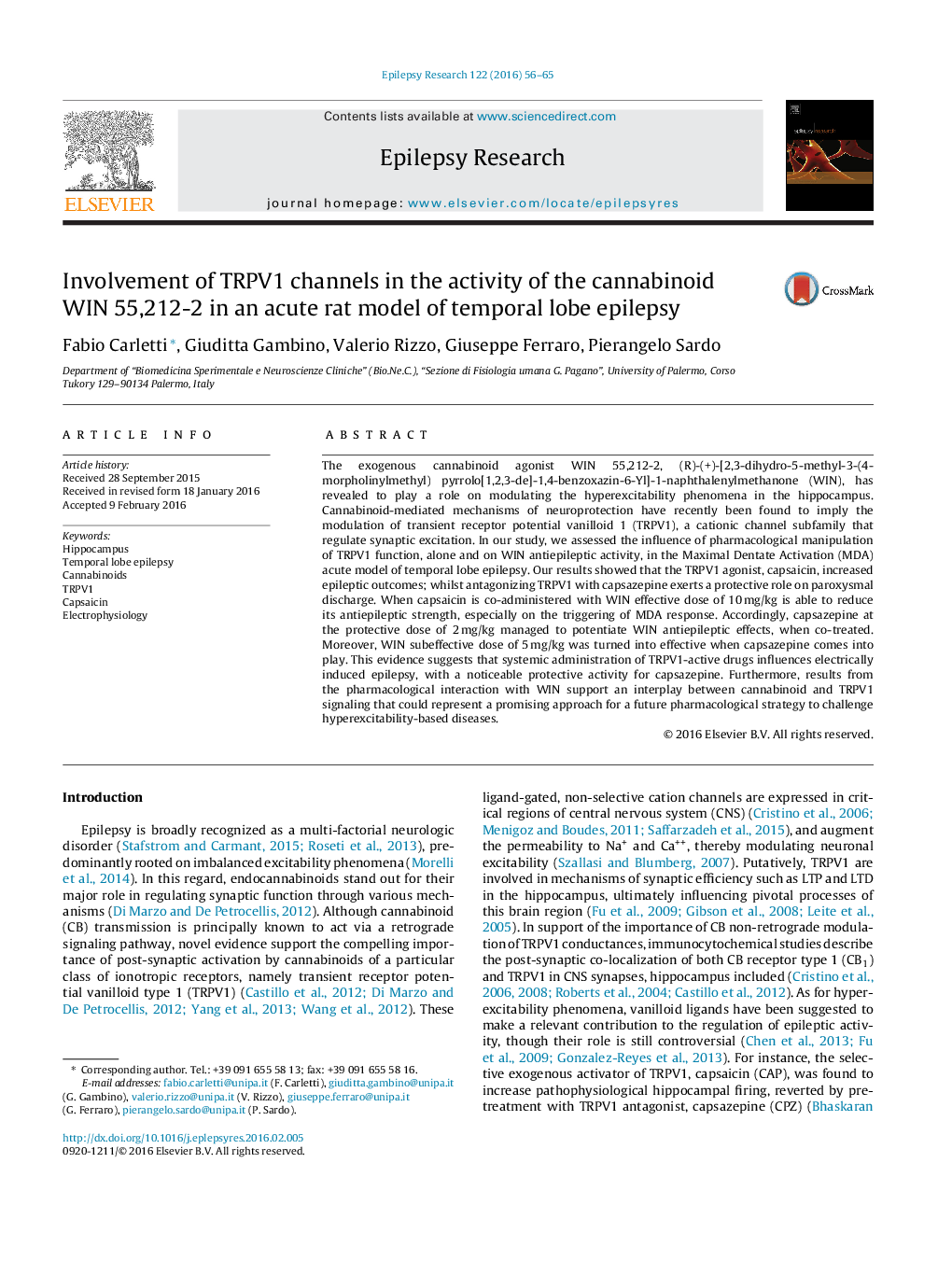| Article ID | Journal | Published Year | Pages | File Type |
|---|---|---|---|---|
| 3051954 | Epilepsy Research | 2016 | 10 Pages |
•The TRPV1 agonist, capsaicin, increases paroxysmal activity in MDA model.•The antagonist capsazepine protects from epileptiform discharges.•Pretreatment with capsaicin impairs antiepileptic action of WIN.•Co-administration with capsazepine enhances WIN protection from epileptic events.•CB and TRPV1 cross-talk in the modulation of hyperexcitability in experimental TLE.
The exogenous cannabinoid agonist WIN 55,212-2, (R)-(+)-[2,3-dihydro-5-methyl-3-(4-morpholinylmethyl) pyrrolo[1,2,3-de]-1,4-benzoxazin-6-Yl]-1-naphthalenylmethanone (WIN), has revealed to play a role on modulating the hyperexcitability phenomena in the hippocampus. Cannabinoid-mediated mechanisms of neuroprotection have recently been found to imply the modulation of transient receptor potential vanilloid 1 (TRPV1), a cationic channel subfamily that regulate synaptic excitation. In our study, we assessed the influence of pharmacological manipulation of TRPV1 function, alone and on WIN antiepileptic activity, in the Maximal Dentate Activation (MDA) acute model of temporal lobe epilepsy. Our results showed that the TRPV1 agonist, capsaicin, increased epileptic outcomes; whilst antagonizing TRPV1 with capsazepine exerts a protective role on paroxysmal discharge. When capsaicin is co-administered with WIN effective dose of 10 mg/kg is able to reduce its antiepileptic strength, especially on the triggering of MDA response. Accordingly, capsazepine at the protective dose of 2 mg/kg managed to potentiate WIN antiepileptic effects, when co-treated. Moreover, WIN subeffective dose of 5 mg/kg was turned into effective when capsazepine comes into play. This evidence suggests that systemic administration of TRPV1-active drugs influences electrically induced epilepsy, with a noticeable protective activity for capsazepine. Furthermore, results from the pharmacological interaction with WIN support an interplay between cannabinoid and TRPV1 signaling that could represent a promising approach for a future pharmacological strategy to challenge hyperexcitability-based diseases.
